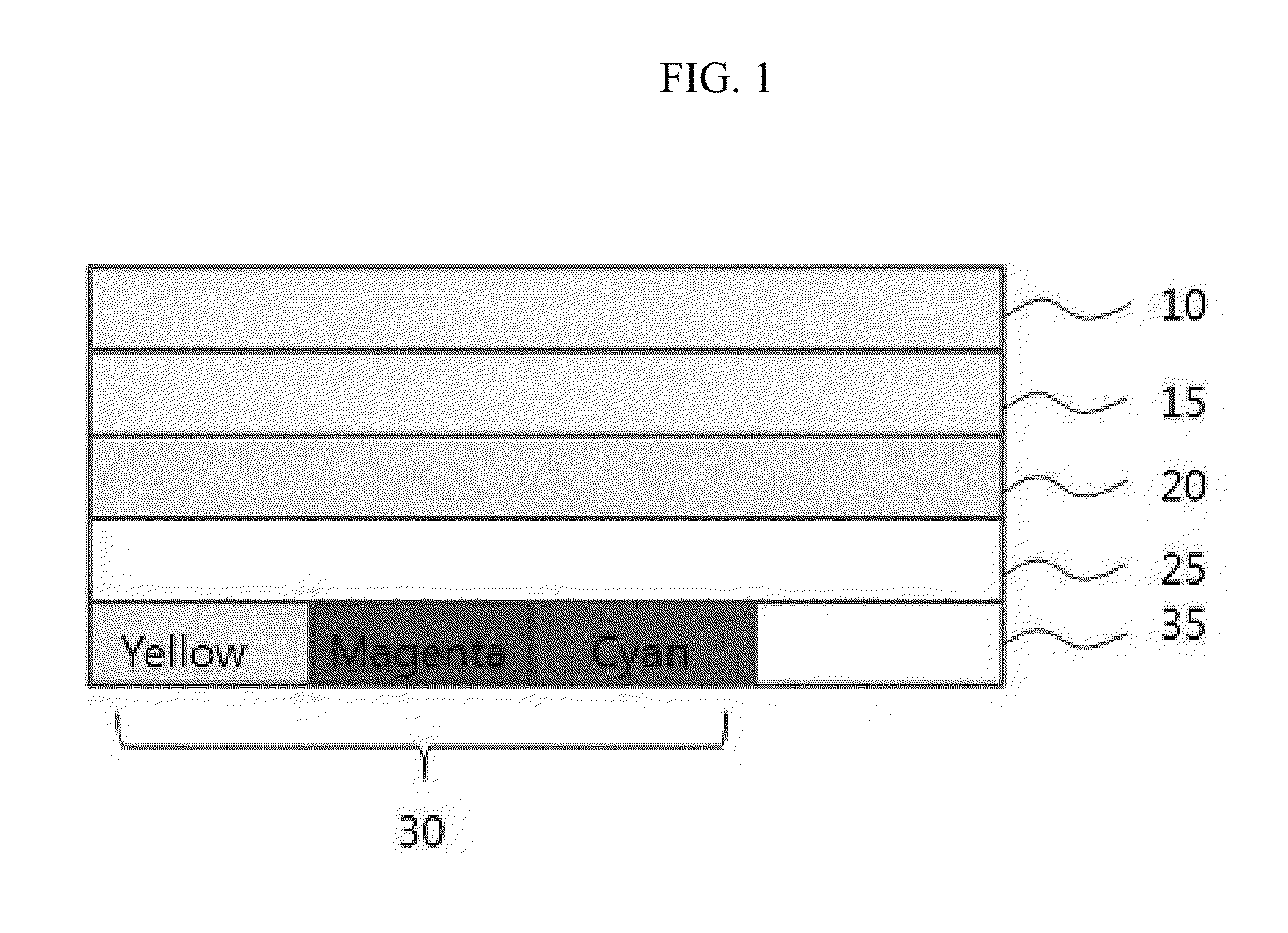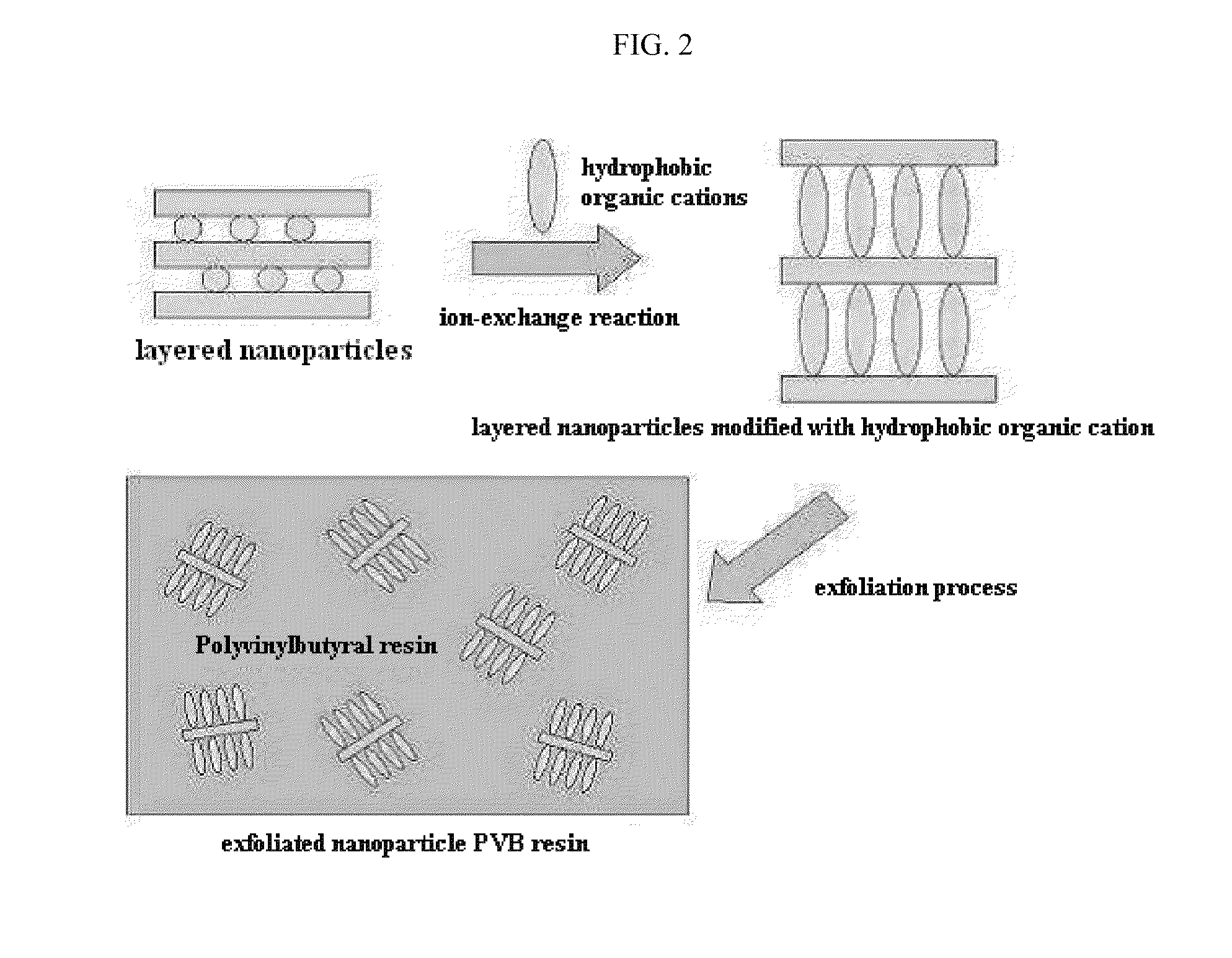Thermal transfer ribbon containing exfoliated layered inorganic nanoparticles or exfoliated layered double hydroxide nanoparticles and manufacturing method thereof
a technology of inorganic nanoparticles and transfer ribbons, which is applied in thermography, duplicating/marking methods, coatings, etc., can solve the problems of reducing the strength of the heated portion of the ribbon, tearing of the ribbon, and the method has a limitation in displaying a continuous gradation, so as to improve the image uniformity and abrasion resistance of the ribbon. , the effect of improving the heat resistan
- Summary
- Abstract
- Description
- Claims
- Application Information
AI Technical Summary
Benefits of technology
Problems solved by technology
Method used
Image
Examples
example 1
Manufacture of Thermal Transfer Ribbon Containing Exfoliated Montmorillonite Inorganic Nanoparticles
[0075]1-1: Preparation of Hydrophobic Layered Inorganic Nanoparticles
[0076]2 wt % of montmorillonite (Closite Na-NMT, Nonoclay) and 1 wt % of dimethyloctadecyl ammonium chloride [CH3(CH2)17]2(CH3)2N+Cl− were added to 97 wt % of distilled water, and the mixture was stirred at room temperature for 6 hours. The stirred suspension was collected and dried at 80° C., thus preparing hydrophobic layered inorganic nanoparticles having a mean particle size of less than 2000 nm.
[0077]1-2: Formation of First Adhesive Layer and Lubricating Heat-Resistant Layer
[0078]3 wt % of p-chlorophenol was mixed with 97 wt % of toluene, and the mixture was applied onto one surface of a 5,6-μm-thick polyethylene terephthalate film (XR30, Toray Saehan Inc., Korea) using a Meyer bar coater, and then dried at 105° C., thus forming a first adhesive layer. To the formed first adhesive layer, a lubricating heat-resis...
example 2
Manufacture of Thermal Transfer Ribbon Containing exfoliated Layered Double Hydroxide
[0083]2-1: Preparation of Layered Double Hydroxide
[0084]Metal precursors magnesium nitrate ([Mg(NO3)2.6H2O]) and aluminum nitrate ([Al(NO3)3.9H2O]) were dissolved in 500 ml of distilled water at a molar ratio of Mg:Al of 2:1. The solution was titrated with sodium hydroxide to a pH of 10.0. Then, the titrated solution was subjected to hydrothermal synthesis at 100° C. for about 24 hours, thus preparing a layered double hydroxide (LDH) suspension. The suspension was centrifuged to obtain a solid which was then dispersed in distilled water and centrifuged. Such dispersion and centrifugation processes were repeated more than three times. The resulting solid was freeze-dried or dried at 80° C., thus obtaining layered double hydroxide as powder.
[0085]2-2: Preparation of Layered Double Hydroxide Modified with Hydrophobic Organic Anions
[0086]2 wt % of the layered double hydroxide prepared in Example 2-1 and...
PUM
| Property | Measurement | Unit |
|---|---|---|
| heat resistance | aaaaa | aaaaa |
| mean particle size | aaaaa | aaaaa |
| heat-resistant | aaaaa | aaaaa |
Abstract
Description
Claims
Application Information
 Login to View More
Login to View More - R&D
- Intellectual Property
- Life Sciences
- Materials
- Tech Scout
- Unparalleled Data Quality
- Higher Quality Content
- 60% Fewer Hallucinations
Browse by: Latest US Patents, China's latest patents, Technical Efficacy Thesaurus, Application Domain, Technology Topic, Popular Technical Reports.
© 2025 PatSnap. All rights reserved.Legal|Privacy policy|Modern Slavery Act Transparency Statement|Sitemap|About US| Contact US: help@patsnap.com



